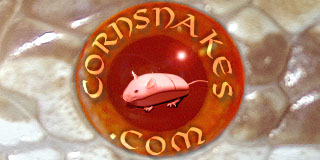Jynx
Digger, RN
Ok serp, CAV, joe, this ones for you (well and anyone else that wants to give it a shot) This year I bred a bubblegum snow to a candycane amel het anery. She laid a total of 22 viable eggs and 4 slugs, and 5 of them went bad before hatching. Out of the clutch, I hatched 7 snows, 8 anerys....and 2 normals?!?! Where the hell did these guys come from? I sat there scratching my brain forever trying to figure this out. I thought that maybe my screaming pink bubblegum is actually a coral snow, because I have no information about his history, but that shouldn't yield any normals...just het hypo. There should be a nice percentage of just amels in the clutch, at least half. The only thing I can come up with is that the amels in the clutch just happened to be the eggs that went bad and the slugs, but it just doesn't make sense to me. As far as I know, the female candycane has no other hets, but this is 4th time she's been bred, and every times its been to an anery bloodline (ghost het amel two years, anery het amel 1 year, snow 1 year). Oi...this is why I prefer to start off with young corns I knoe EVERYTHING about...bloodlines, behavior etc.
